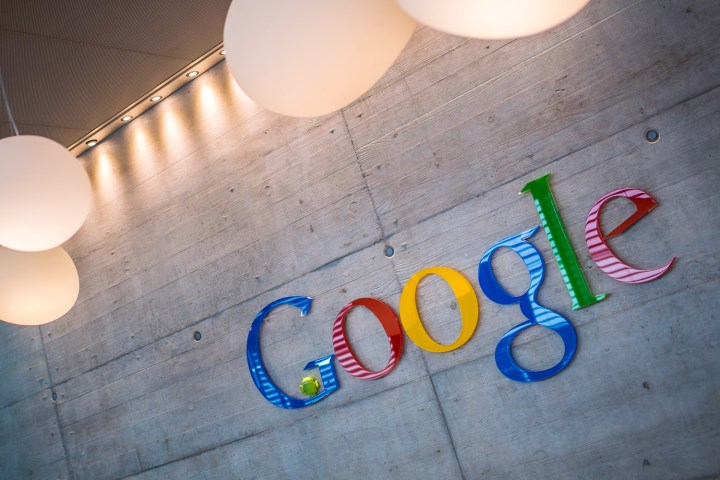
Improved APIs
The group will be helmed by Jia Li, former head of research at Snapchat and pioneer behind the feature that lets you attach emojis to real-world objects, and Fe-Fei Li, former director of AI at Stanford. They will oversee a slew of upgrades to Google’s cloud services in the coming months, much of which will involve Google Cloud’s hardware infrastructure. New graphical processing units (GPUs), which Google said are especially good at accelerating the sort of self-training machine learning software that lives on the company’s servers, will join the existing network’s CPUs. And a novel security layer will better ensure that customers’ data remain anonymous — GPUs caches will be wiped before beginning a new task, a practice which Google said isn’t common among cloud platforms.
Google Cloud is improving in other ways, as well. Its Cloud Vision application programming interface (API) — a system now capable of identifying millions of logos, landmarks, and objects in images — now runs on Google’s custom “Tensor Processing Units,” the processors optimized to run Google’s TensorFlow machine learning platform. (APIs, for the uninitiated, are an extensible set of resources that let developers leverage third-party services like Cloud Vision.) The developer tools are now unified, which Google said will make it “simpler to implement,” and the company has reduced the price of “large-scale deployments” by 80 percent.
Google is also introducing Cloud Jobs API, a cloud-powered service that matches prospective employees with companies. “[The system] uses [AI] to understand how job titles and skills relate to one another and what job content, location, and seniority are the closest match to a [candidate’s] preferences,” Google said. It’s intended for job boards and career sites like LinkedIn and Jobseeker, for instance, and is already in use by three: Jibe, tech job listing site Dice, and CareerBuilder.
Another manifestation of Google’s machine learning API, Cloud Translation API, is now available globally after a months-long beta. It’s now capable of more accurately identifying the names of things such as people and locations, parsing the syntax of sentences, and analyzing morphology (the forms of and relationships between words), and it supports eight languages — English, Chinese, French, German, Japanese, Korean, Portuguese, Spanish, and Turkish — and 16 language pairs. The AI algorithms reduce errors by from 55 to 85 percent, Google said, and represent some of the largest improvements of machine learning in the past decade.
Google’s also introducing a new Premium translation service fit for “precise, long-form” applications like live-stream translations and “high volume[s] of emails.” It will debut in the coming weeks.
Fun experiments
Google also took the opportunity to showcase AI-powered tools and apps on a new website: AI Experiments.
AI Experiments taps Google’s TensorFlow, the company’s open source machine learning platform. It’s the most popular machine learning framework on project host site GitHub, Google said, and one that has been used to transform images into psychedelic nightmares, teach computers to play Pong, and invent fake Chinese characters.
One app on the AI Experiments site, AI Duet, generates melodies that complement your own composition style, essentially acting as a sort of computer-driven musical partner. Another, Quick, Draw!, tasks you with depicting a written prompt in under 20 seconds. Google’s artificial intelligence attempts to identify it in real time, and, once the time has elapsed, shows which guesses it considered along the way.
Giorgio Cam identifies objects in rhyming form, pairing the result with an electronic soundtrack by Italian DJ and musician Giorgio Moroder. Bird Sounds organizes dozens of bird calls by such categories as tone and frequency. The Thing Translator identifies objects and gives the translated word for whatever you show it. And Infinite Drum Machine uses machine learning to sort everyday sounds into similar families.
Google is hoping to grow the website into a veritable collection of AI-powered utilities — and it’s accepting admissions starting today.
Editors' Recommendations
- We may have just learned how Apple will compete with ChatGPT
- AI is about to make Google Translate a whole lot smarter
- Google Photos now lets you search for text in your images
- As Google keeps racing ahead, where is Apple’s A.I. strategy?


